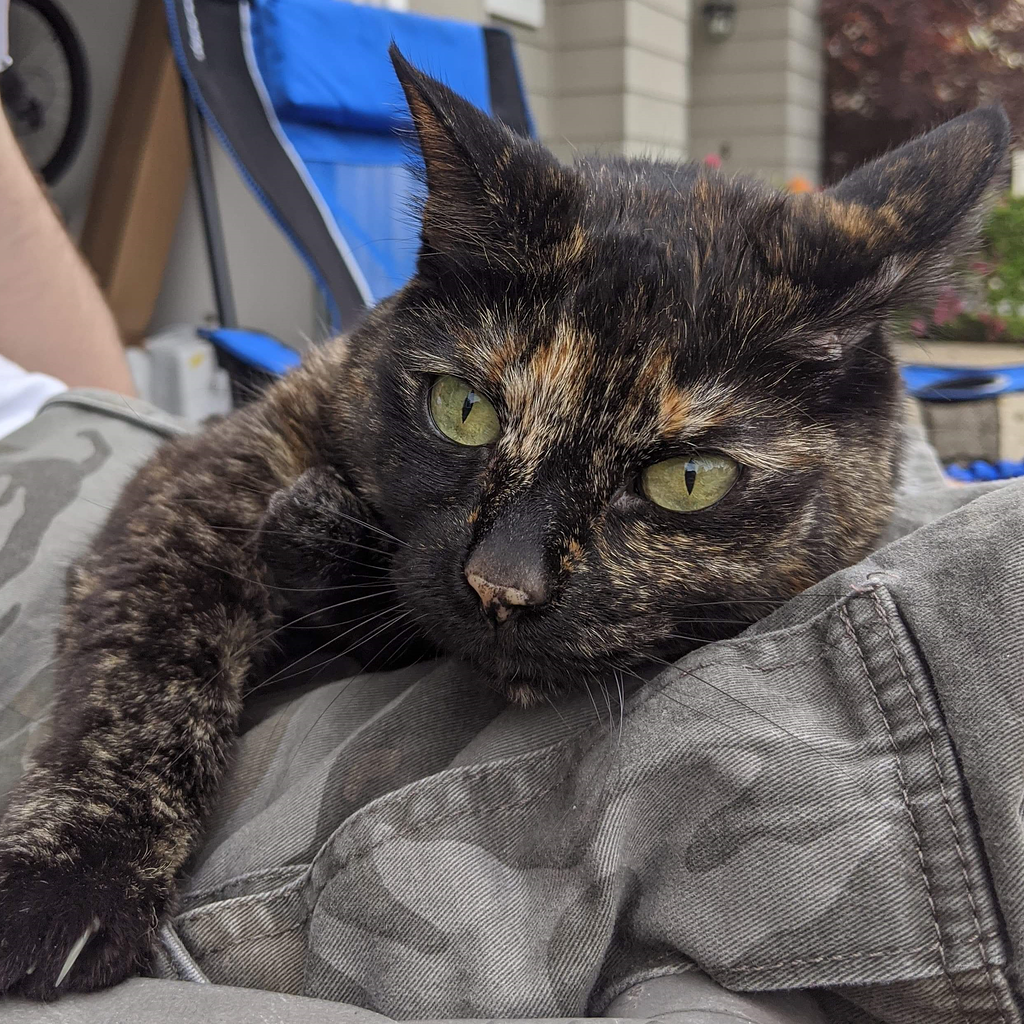

Sounds like they plan to move local government into it, instead of renovating 33 of their buildings. The current 33 buildings could potentially be demolished (currently seismical unsafe) and rebuilt as housing though.


Sounds like they plan to move local government into it, instead of renovating 33 of their buildings. The current 33 buildings could potentially be demolished (currently seismical unsafe) and rebuilt as housing though.


My recollection is you need to “talk” to each animal once a day, every day.


Shogun season 1. It was really well made.
Heard they were green lit for 2 more seasons. Unfortunately, it seems the first season was based on a book and there’s no book to base the next 2 seasons on.
There is history, but I’ve become very hesitant about shows that outrun their books (ex. GoT). So, hopefully they are the same quality, but not betting on it.


deleted by creator


Relevant text:
Ukrainian crews say the fundamental problem is that the Abrams were built for advances aided by air power and artillery, which Ukraine lacks.
Russia, meanwhile, continues to make heavy use of drones in its attacks, which the Abrams struggle to defend against.


Relevant text below:
District 19 represents 8,000 machinists who repair locomotives and heavy equipment for freight rail carriers including CSX, BNSF, and Union Pacific.
The Department of Labor and the Machinists entered into an agreement to rerun last year’s election—which Murtaugh lost by just six votes—after the challengers filed charges over irregularities with member addresses. It is extremely rare to have an election redone in this way. Fewer than 0.3 percent of union elections lead to a rerun supervised or ordered by the DOL.
Ballots were cast—or due in the mail—on May 3, but then had to be sealed and shipped to a central location to be counted under DOL direction.
Murtaugh and Rosato campaigned on a platform of increased transparency and a more militant posture toward the employers.
“The members have voted in a working member, because they’re tired of the ways things have been run,” says Murtagh. “I campaigned on having members engaged in the contract negotiations—no more closed doors.”
Negotiations for the next national rail contracts are expected to begin later this year. Contract negotiations under the Railway Labor Act, which covers railroad and airline workers, often take years.


No particular order, but it seems I hit quite a few different genres.


Fixed. Thank you.


Relevant Section on the genetics:
For the study, the researchers took blood from five of the cats, which had been adopted, and conducted a DNA test on four of the felines, which turned up no genetic mutations associated with white fur.
They then performed a whole genome sequencing for two of the cats, and this step turned up a deletion in what’s called the KIT gene, which can encode whether white will turn up in a feline’s coat (scientists have also connected variations in the KIT gene to piebald patterns in various animals like horses and mice.)
“In summary, comparative data from other species and genotype segregation analysis support the newly discovered KIT region deletion as potentially being a cause of salmiak coat color in cats,” the researchers conclude.


Same with golfing, bowling, darts, etc. I think part of the enjoyment of these types of sports/games/competitions is to see how close to perfection you can get.


Relevant section of the article where it lays out what has been changing and what still needs to change:
… graft has been all but exterminated in some of the worst affected areas - for instance, government services such as issuing passports, permits and licences.
He also tells the BBC that significant progress had been made in reforming education and police.
Problem areas
Mr Kalmykov admits, however, that the government has been less successful in eradicating corruption in using natural resources (e.g. in mining and forestry), regulating monopolies and in large infrastructure projects.
“Progress has been slowest where big interests and big players meet,” he says.
According to him, “in the next five-ten years the government should focus on cleansing the judiciary, which will make the general system of public administration healthier”.


My understanding is that some of the benefits China would get from invading Taiwan is the control of Taiwan’s world-leading semiconductor industry. So making it public knowledge that any invading force (i.e. China) would not be able to take over their production capabilities is a small deterrent.


I really like your idea. It would be great insight to have.


Good news we are increasing the percent from renewables. The pace leaves something to be desired though:
23 years to increase 12% (2000 to 2023, 18% to 30%)
12 years to increase 10% (2011 to 2023, 20% to 30%)
6 years to increase 5% (2017 to 2023, 25% to 30%)
Based on the charts and write up, it seems like China is the main driver of us even making significant progress.
I’d like to be optimistic but 6 years to go 5% will have us totally renewable in 84 years (2023+[6x14]=2107).


The last paragraph I quoted talks about suburban population transport percentages. So assuming it’s the same for inner Paris, the remainder would be walking and then public transportation.


Some good stats in the article:
… bicycles already surpass cars as a means of transportation in the interior of Paris, accounting for 11.2% of trips compared to 4.3%. A similar trend is seen in trips between the suburbs and the city center: 14% are made by bicycle and 11.8% by car.
Rue de Rivoli, with its two-way cycle lanes and its dedicated lane for buses and taxis …
… Paris has more than 1,000 kilometers (621 miles) of facilities adapted for cyclists, including more than 300 km (186 m) of bike lanes and 52 km (32 m) of provisional lanes, according to the latest available municipal data, from 2021. The rest are lanes shared with cars or lanes only marked with paint on the ground.
By 2026, local officials want the entire city to be suitable for two-wheel transportation. To this end, it has set aside $250 million, $100 million more than in Hidalgo’s first term.
… only 27% of the “bike plan” has been carried out despite the fact that 62% of Hidalgo’s second term in office has already elapsed.
… indicated that 11.2% of trips in Paris were made by bike between 2022 and 2023, compared to 4.3% by car. The change in trend is clear. In 2021, two wheels still represented 5.6% of trips, while cars were 9%, according to Belliard.
… the research indicates that residents of the nearest suburbs also prefer to use the bike, with 14% of trips compared to 11.8% for cars. The figures are even better during rush hour, when 18.9% of trips are made by bike and only 6.6% by car. Travel on foot, however, continues to lead mobility within the municipality with 53%, followed by those made on public transit, with 30%. The study was carried out with 3,337 residents of the capital region who agreed to be fitted with a GPS tracker.
I wouldn’t mind another movie/series on the topic though and a helldriver’s universe may have enough popularity to get a movie/series universe going.


To add on to what NegativeInf said and linked, “0.25” is a weird way to say a quarter of a day. It makes more sense, to me, that the zero at the front was left off and it should read “0.25-6 hr per day”.


A bit disappointing, was hoping for a bigger milestone but this is still a positive.
Relevant Text:
California has set a benchmark for renewable energy, with wind, solar, and hydro providing 100% of the state’s energy demand for 25 out of the last 32 days (and counting).
Added context is that it isn’t for the full day, only needs to be part of the day (ex. 15 minutes), where renewables provided all of the electricity needs for the state.
I would add that you can swallow air to create the need to burp.